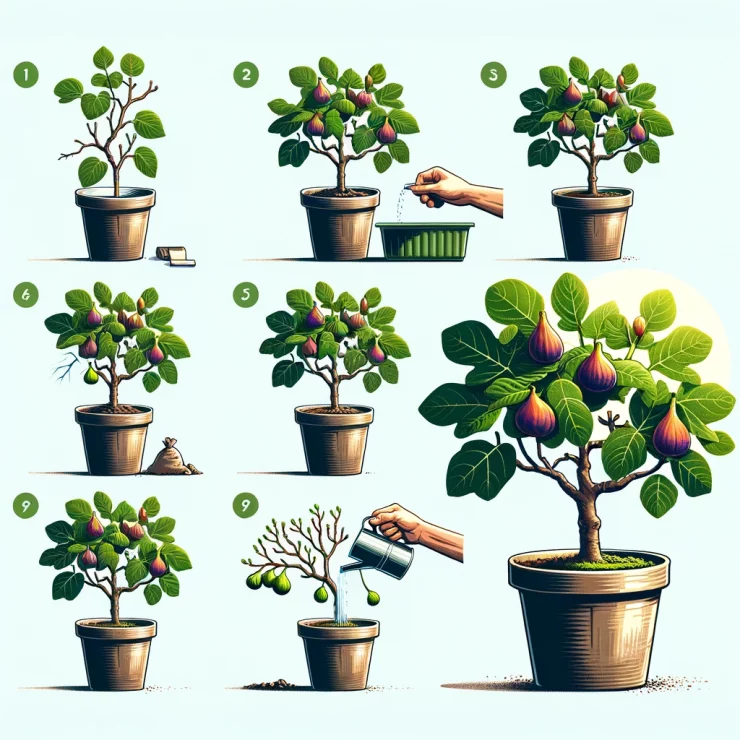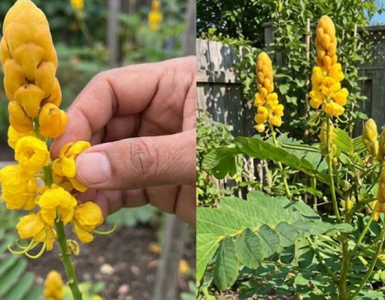Growing a fig tree from seed can be a rewarding experience, offering the satisfaction of nurturing a plant from its very beginnings. While growing a fig tree from seed may take a bit more time and patience compared to propagating from cuttings, it’s an accessible and enjoyable process that anyone can try. In this guide, we’ll walk you through the steps of growing a fig tree from seed in a pot, allowing you to enjoy the delicious fruits right from your own home.
Step 1: Gather Your Materials
Before you begin, make sure you have everything you need:
Fig seeds (either collected from fresh figs or purchased)
Potting soil mix
Pot with drainage holes (choose a pot that is at least 10-12 inches deep)
Watering can or spray bottle
Plastic wrap or a clear plastic bag
Warm, sunny location for your pot
Step 2: Prepare the Seeds
Start by removing the seeds from ripe fig fruits. Rinse them gently under running water to remove any pulp or debris. Avoid damaging the seeds during this process, as intact seeds are more likely to germinate successfully.
Step 3: Plant the Seeds
Fill the pot with a well-draining potting soil mix, leaving about an inch of space below the rim of the pot. Plant the fig seeds about half an inch deep into the soil, spacing them evenly apart. Lightly press the soil down around the seeds to ensure good soil-to-seed contact.
Step 4: Provide Adequate Moisture
Water the soil thoroughly after planting the seeds until the water drains out from the bottom of the pot. Keep the soil consistently moist but not waterlogged throughout the germination process. You can use a watering can or a spray bottle to water the soil gently, preventing the seeds from being disturbed.
Step 5: Encourage Germination
Cover the pot with plastic wrap or place it inside a clear plastic bag to create a greenhouse-like environment that retains moisture and warmth. This will help to speed up the germination process. Keep the pot in a warm, sunny location, such as a windowsill or greenhouse, where it can receive plenty of indirect sunlight.
Step 6: Transplanting Seedlings
Once the seedlings have grown to a height of about 4-6 inches and have developed several sets of true leaves, they are ready to be transplanted into larger pots or outdoors in a sunny spot with well-draining soil. Carefully remove the seedlings from the pot, taking care not to damage their delicate roots, and replant them at the same depth in the new container or garden bed.
Step 7: Care and Maintenance
Continue to water the fig tree regularly, keeping the soil consistently moist but not waterlogged. Fertilize the plant with a balanced liquid fertilizer every 4-6 weeks during the growing season to promote healthy growth and fruit production. Prune the tree as needed to maintain its shape and size, removing any dead or damaged branches.
Step 8: Enjoy the Fruits of Your Labor
With proper care and attention, your fig tree will reward you with delicious, sweet figs that you can enjoy fresh or use in a variety of culinary applications. Harvest the ripe figs as they become ready, and savor the fruits of your labor for years to come.
Growing a fig tree from seed in a pot is a fulfilling and satisfying process that allows you to connect with nature and enjoy the fruits of your labor. With these simple steps, you can successfully grow your own fig tree and experience the joy of nurturing a plant from seed to fruit-bearing tree.






Add comment